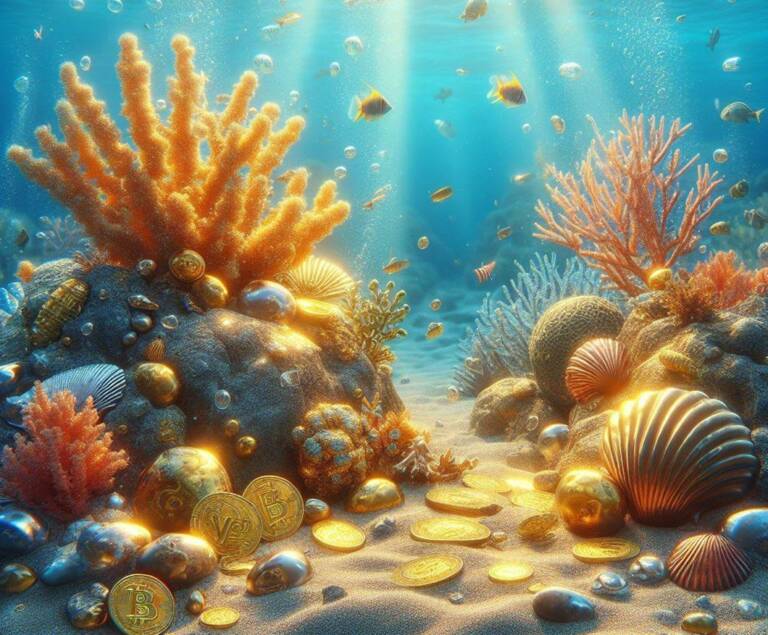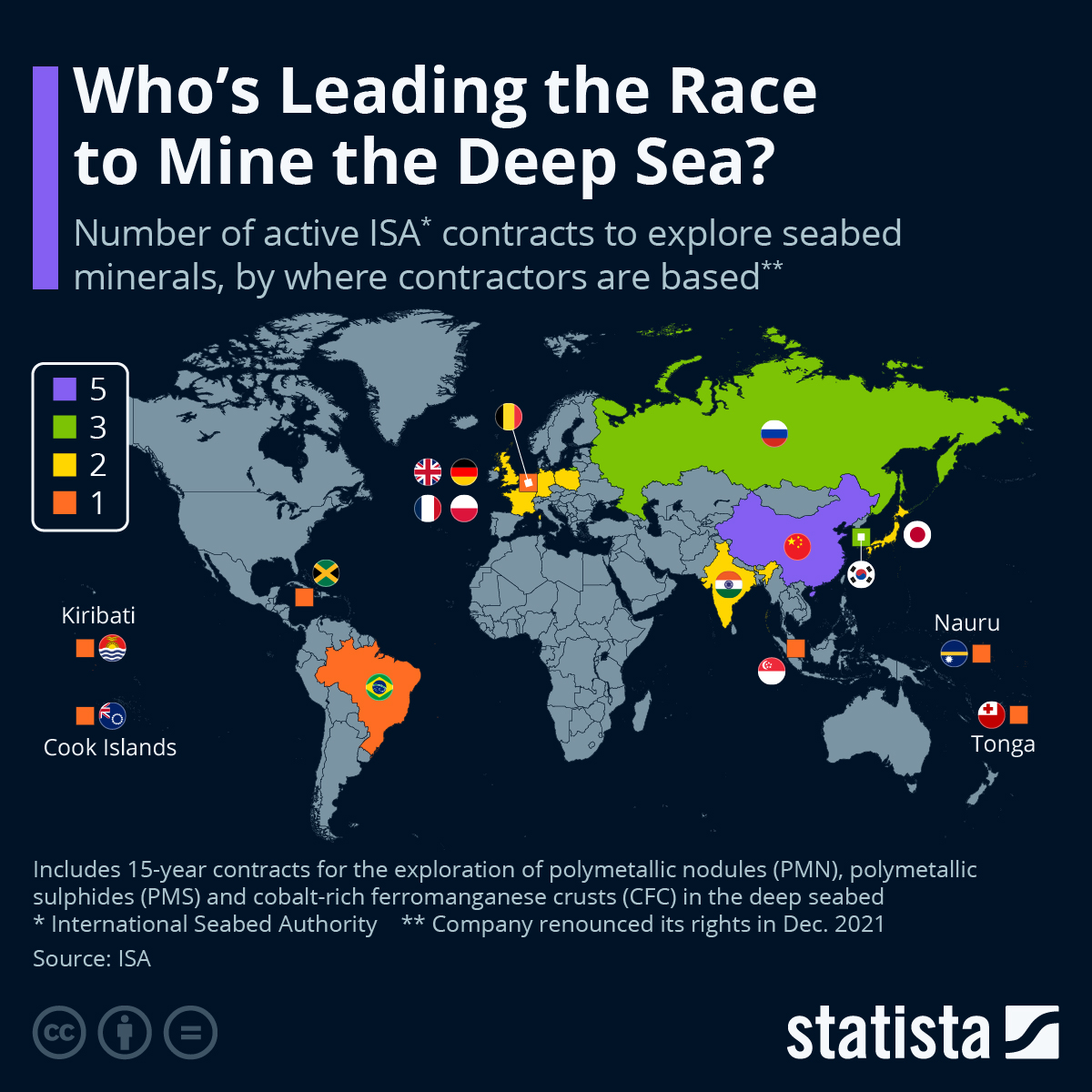Who is leading the global race to exploit underwater mineral resources?

India has applied for two new licenses from the International Seabed Authority (ISA) to explore parts of the Indian Ocean seabed for minerals crucial to the green energy transition. If granted, India will hold four contracts, making it the country with the second largest number of active contracts for deep-sea mineral exploration projects in the world.
AsStatista's A nna Fleck shows in the chart below, based on ISA data, China currently has five contracts, making it the leading country in terms of contracts for licensed deep-sea mineral exploration.
You will find more infographics on Statista.
There are currently 31 contracts signed by the ISA , 30 of which are active and each has a duration of 15 years. Some of these involve government entities – for example, the Government of India, the Government of Poland and the Government of the Republic of Korea all appear on the ISA website. However, most are private companies that have so far directly engaged in deep-sea mining contracts with the ISA.
There are three main categories of deep-sea mineral exploration : the exploration and collection of polymetallic nodules (PMNs), polymetallic sulphides (PMSs), and cobalt-rich ferromanganese crusts (CFCs) in the deep seabed. The two new contracts proposed by India relate to the latter two methods, firstly for PMS exploration in the Carlsberg Ridge of the Central Indian Ocean and secondly for CFC exploration in the Afanasy deep seabed -Nikitin Seamount in the Central Indian Ocean.
According to the ISA, the majority of deep-sea exploration companies focus on polymetallic nodules (19; of which 17 focus on the Clarion-Clipperton Fracture Zone), followed by polymetallic sulfides (7) in the ridge Southwestern Indian Ridge, Central Indian Ridge, and Mid-Atlantic Ridge, and only 5 companies deal with polymetallic crusts in the Western Pacific Ocean.
As Gaby Ramirez's article for Unbias the News points out, the issue of deep-sea mining is complex and divisive. Proponents argue that to manage a successful green transition, we will need more of these precious, fast-moving metals. Critics argue, however, that much more information is needed before taking further action, particularly regarding the impact of such extraction on the environment of what has been called Earth's 'final frontier'.

Thanks to our Telegram channel you can stay updated on the publication of new Economic Scenarios articles.
The article Who is leading the global race to exploit underwater mineral resources? comes from Economic Scenarios .
This is a machine translation of a post published on Scenari Economici at the URL https://scenarieconomici.it/chi-sta-guidando-la-corsa-mondiale-allo-sfruttamento-delle-risorse-minerarie-sottomarine/ on Sat, 30 Mar 2024 14:42:18 +0000.

